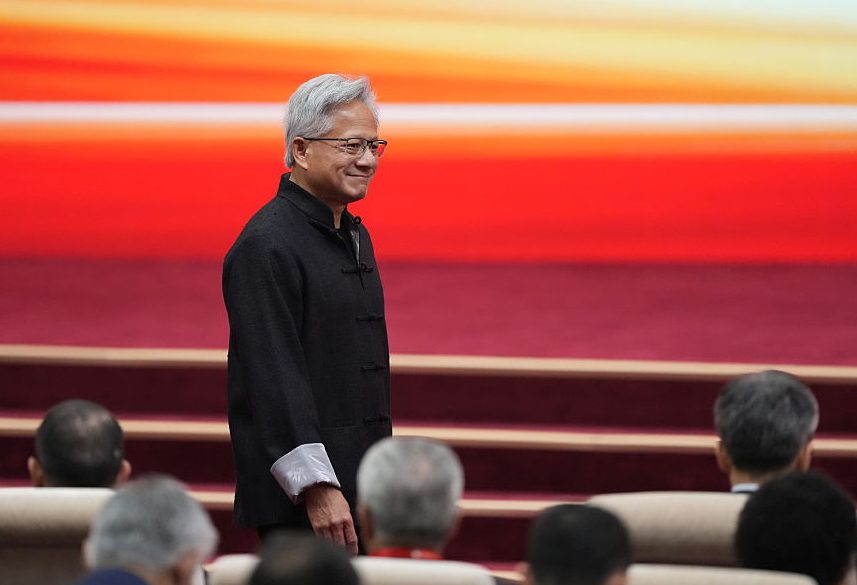Jensen Huang, clad in a traditional Chinese jacket, attends the third China International Supply Chain Expo in Beijing on July 16, 2025. Wan Quan/VCG via Getty Images
Nvidia CEO Jensen Huang finds himself in an increasingly difficult balancing act in China. After months of effort persuading President Trump to ease restrictions and allow the company to resume A.I. chip sales to the country, Huang was hit with an unexpected reversal: Last month, Chinese regulators moved to block Nvidia’s H20 chips, forcing the company to halt production of its China-specific product line. In response, Nvidia has shifted to developing a new processor, called the B30A, Reuters reported last week..
Built on the company’s Blackwell architecture, the B30A will include NVLink and high-bandwidth memory but deliver only about half the performance of Nvidia’s flagship B300 chip, keeping it within U.S. export-control limits. Alongside it, Nvidia is also preparing a less advanced RTX6000D chip aimed at professional and inference workloads. Both chips are designed to comply with Washington’s tightening rules while keeping a foothold in the world’s second-largest economy.
The moves come amid broader political pressures. In May, Senator Tom Cotton and several House Republicans introduced the Chip Security Act, which would mandate that A.I. chips from companies like Nvidia include built-in location verification. While that bill has not advanced in Congress, Chinese authorities issued guidance earlier this summer urging local firms to avoid Nvidia products over alleged security risks, including the possibility of remote tracking or control.
Nvidia’s challenges are compounded by the revenue-sharing terms attached to its export license. The company now must send 15 percent of its China A.I. chip sales back to the U.S. government—a levy that some industry leaders warn could discourage innovation.
“President Trump imposing a 15 percent tax on our innovation companies sets a dangerous precedent,” Arnie Bellini, general partner at Bellini Capital, told Observer. Bellini estimates that China accounts for 15 to 20 percent of Nvidia’s global revenue (consistent with other third-party estimates), and existing H20 inventories may generate as much as $6 billion in sales, giving Nvidia a cushion as it pivots to new China products.
“Even with the tariff imposed, Nvidia will make significant revenue on any sales to China. The deal gives breathing room to meet the next two quarters,” Maribel Lopez, founder and principal analyst at Lopez Research, told Observer.
Nvidia’s share of revenue from China has actually been declining in recent years, dropping from 21 percent in 2023 to below 15 percent in the most recent fiscal year, according to Business Insider. Still, China’s importance isn’t just about sales; it’s about keeping developers there tied to Nvidia’s technology. “In order for America to have A.I. leadership is to make sure that the American tech stack is available to markets all over the world so that amazing developers, including the ones in China, are able to build on the American tech stack,” Huang said in an interview last month with CNN.
Nvidia will report second-quarter earnings after the market close today, with Wall Street expecting strong results on the back of Blackwell-driven data center growth. Blackwell already accounts for 70 percent of Nvidia’s data center revenue, a clear sign of Nvidia’s dominance over the A.I. market. Analysts will see whether the company’s new China-compliant chips can keep its momentum going.


